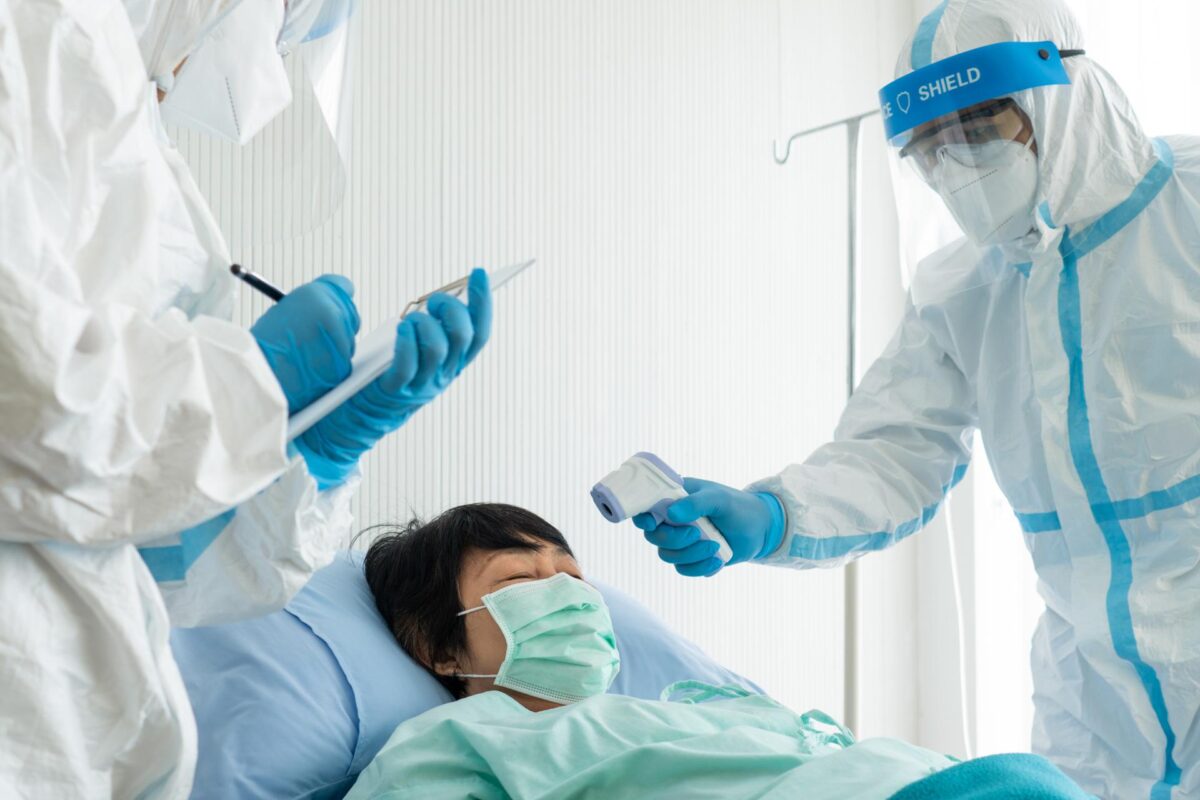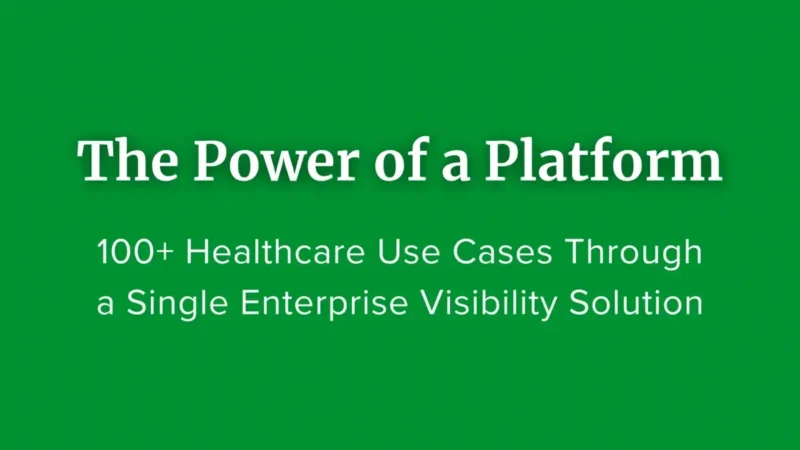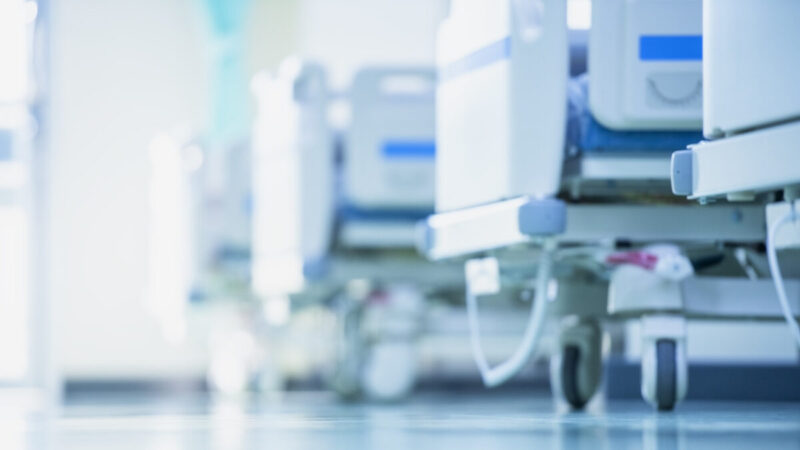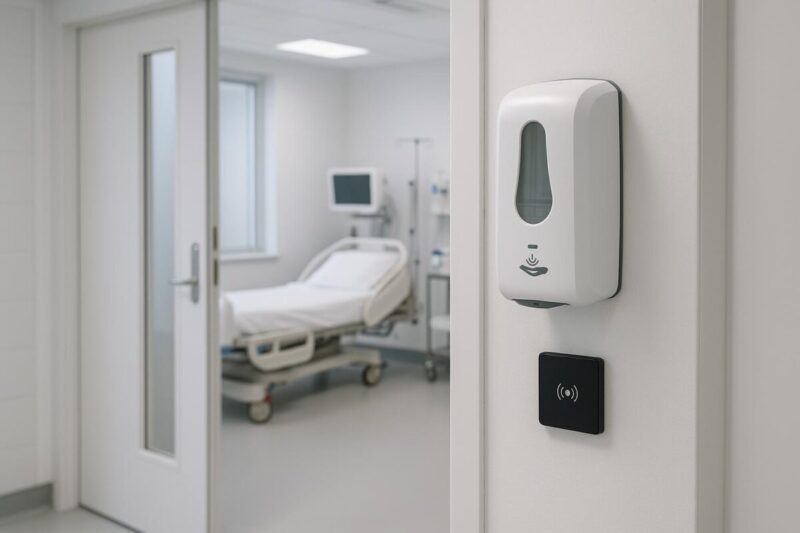hai

A New Frontier in Patient and Staff Safety
In healthcare settings across the United States, the fight against Healthcare-Associated Infections (HAIs) is a constant, critical battle. These infections represent a significant threat to patient safety, leading to complications, extended hospital stays, and increased healthcare costs. While traditional infection control protocols are foundational, modern healthcare facilities are discovering a powerful ally in this fight: Real-Time Location System (RTLS) technology. This innovative approach moves beyond manual checks and reactive measures, creating a proactive, data-driven framework for preventing infections before they start.
By automating monitoring and providing granular insights, RTLS is not just enhancing existing protocols—it's fundamentally transforming how hospitals and senior living facilities approach infection control, creating a safer environment for everyone.
The Persistent Challenge of Healthcare-Associated Infections (HAIs)
According to the Centers for Disease Control and Prevention (CDC), on any given day, approximately one in every 31 hospital patients has at least one HAI. This staggering statistic highlights the pervasive nature of the problem. HAIs not only pose a direct risk to vulnerable patients but also place a significant financial strain on the healthcare system, costing billions of dollars annually in extended care and treatment.
At the core of prevention is hand hygiene. It is universally recognized as the single most effective way to prevent the spread of infections. Yet, ensuring consistent compliance has always been a major operational challenge. Traditional methods of monitoring, such as direct observation, are often resource-intensive and can produce unreliable data due to the Hawthorne effect—where individuals alter their behavior because they know they are being watched.
From Manual Audits to Intelligent Automation
The limitations of manual audits—small sample sizes, potential for human error, and the observer effect—mean that healthcare facilities rarely have a complete or accurate picture of their hand hygiene compliance. This data gap can leave them vulnerable to outbreaks and compromise patient safety. This is where electronic hand hygiene monitoring powered by RTLS technology provides a definitive solution.
By automating the entire process, RTLS provides unbiased, continuous data, 24/7. It tracks compliance without direct human oversight, capturing every hand hygiene event (or lack thereof) as staff move in and out of patient rooms and other critical areas. This shift from manual spot-checking to automated, comprehensive monitoring is a cornerstone of modern infection control.
Manual vs. Automated Hand Hygiene Monitoring
| Feature | Manual Auditing (Direct Observation) | Automated RTLS Monitoring |
|---|---|---|
| Data Accuracy | Subject to human error and observer (Hawthorne) effect. | Objective, unbiased, and continuous data collection. |
| Sample Size | Limited; typically less than 2% of all opportunities. | Comprehensive; captures 100% of hand hygiene opportunities. |
| Resource Cost | Labor-intensive, requiring dedicated staff time for observation. | Low ongoing labor cost after initial setup. |
| Feedback Loop | Delayed; feedback is often general and not immediate. | Real-time alerts and immediate, actionable feedback for staff. |
| Reporting | Manual data entry and report generation; time-consuming. | Automated, customizable reports accessible via analytics dashboards. |
How RTLS Strengthens Infection Control Protocols
An RTLS platform integrates seamlessly into the hospital environment to create a powerful network for safety and compliance. Here’s how it works:
1. Locating Staff and Equipment in Real-Time
Staff members wear small, discreet badges that communicate with sensors placed throughout the facility. This allows the system to know the precise location of every staff member at all times. This same technology can be applied to critical medical devices, ensuring you always know the location of IV pumps, wheelchairs, and other mobile equipment through advanced hospital asset management.
2. Automating Workflows and Monitoring Key Interactions
When a badged staff member enters or exits a patient room, the RTLS system automatically records the event. It can detect if the staff member used the hand sanitizing station upon entry and exit. This automated data collection provides a complete record of compliance, removing any guesswork. This capability extends to automating other critical tasks, streamlining healthcare workflow automation for greater efficiency.
3. Enabling Rapid Contact Tracing
In the event of an infectious outbreak, time is of the essence. RTLS data provides an immediate and accurate record of every patient, staff member, and piece of equipment that a carrier may have come into contact with. This allows infection control teams to respond swiftly, isolating potential exposures and preventing a wider outbreak far more effectively than with manual interviews and memory-based tracing.
Beyond Hand Hygiene: A Holistic Approach to Safety
While essential, hand hygiene is just one piece of the infection control puzzle. A comprehensive RTLS platform enhances safety across multiple domains in both acute care hospitals and senior living communities. This includes:
- ✔ Environmental Monitoring: Automated systems can continuously track and log temperatures in refrigerators and freezers storing vaccines, medications, and lab samples. This ensures that critical supplies are stored safely and compliantly, preventing spoilage. Explore more about our RTLS temperature monitoring solutions.
- ✔ Asset and Equipment Sterilization: RTLS can track the location and status of medical equipment, ensuring that devices are properly cleaned and sterilized between uses and making them easy to locate when needed.
- ✔ Wander Management: In senior living or memory care units, RTLS helps prevent residents from wandering into unsafe areas, providing peace of mind for staff and families through reliable wander management systems.
This integrated approach ensures that every facet of the care environment is optimized for safety and efficiency, reducing risks from multiple angles.
Ready to Elevate Your Infection Control Strategy?
Embrace the future of healthcare safety with a data-driven, automated approach. Discover how ZulaFly's RTLS platform can help you reduce HAIs, improve compliance, and create a safer environment for your patients and staff.
Frequently Asked Questions (FAQ)
Q: How difficult is it to install an RTLS system in an active hospital?
A: Modern RTLS platforms are designed for minimal disruption. ZulaFly utilizes a cloud-hosted system that can be installed quickly and efficiently, often with no need to close down patient care areas. The process is carefully planned to integrate smoothly with your existing operations.
Q: Does RTLS technology integrate with our existing Electronic Health Record (EHR) system?
A: Yes, leading RTLS solutions like ZulaFly are built for interoperability. Our platform can integrate with all major EHR and other healthcare IT systems, allowing for the seamless flow of data that enriches patient records and streamlines administrative and clinical workflows.
Q: How does this technology help with staff adoption of hand hygiene protocols?
A: RTLS provides real-time, non-punitive feedback. Gentle alerts or reminders can nudge staff in the moment, while aggregated, anonymized data can be used for departmental training to highlight areas for improvement. This supportive, data-backed approach is often more effective than traditional oversight for driving long-term behavioral change.
Q: Is RTLS only for large hospital systems in the United States?
A: No, RTLS is a scalable technology suitable for facilities of all sizes, from large acute care hospitals and health systems to smaller clinics, critical access, regional hospitals, and senior living communities. The cloud-based nature of the ZulaFly platform makes it adaptable and cost-effective for a wide range of healthcare environments seeking to improve safety and efficiency.
Glossary of Terms
- RTLS (Real-Time Location System): A technology platform that uses a combination of hardware (tags/badges and sensors) and software to automatically identify and track the location of objects or people in real time within a defined space.
- HAI (Healthcare-Associated Infection): An infection that a patient acquires during the course of receiving treatment for other conditions within a healthcare setting.
- Hand Hygiene: A general term referring to any action of hand cleansing, which includes washing hands with soap and water or using an alcohol-based hand sanitizer.
- Hawthorne Effect: A phenomenon in which individuals modify an aspect of their behavior in response to their awareness of being observed. In healthcare, this often leads to temporarily inflated compliance rates during manual audits.



